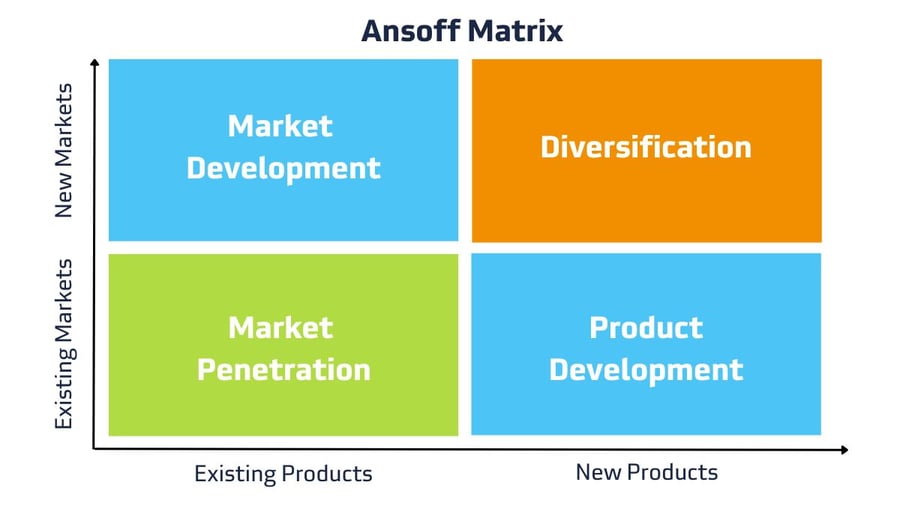What Should a Successful Growth Strategy Framework Consist Of?
 Krista
|
Krista
|

Are you feeling stalled with your business and know that there is room for growth? A growth strategy framework is key to moving your business forward and helping it grow successfully. Growth strategy frameworks are the map to navigating market shifts and your business’s expansion, giving your company the competitive edge it needs to survive and thrive.
Having a plan in place will ensure your brand delivers a clear, compelling, and consistent message to your clients and customers. Keep reading to learn what a growth strategy framework looks like, how you can better understand your clientele, and ways you can launch your successful growth journey.
How to Begin Developing a Marketing Growth Strategy
The first step to developing an effective marketing growth strategy is understanding your customers. Starting with your clients, even in developing your framework, builds the foundation of your customers and how you can understand who they are and what they need.
Ask yourself the key questions to get into the minds of your customers and determine how you can best serve them: Who are they? What do they need? How does your product solve the customer's problems? How will you get them excited about your brand, product, or service and help them stand out in their needs? Once you can answer these questions, it’s easier to know where and how to spend your marketing budget.
What Is a Growth Strategy Framework?
A growth strategy framework is a structured method of achieving a company’s expansion goals. It involves identifying key growth drivers, choosing the most effective growth strategies for your brand, and implementing them in a cohesive way. A growth strategy framework is critical to achieving sustainable growth, helping your company navigate evolving markets, and creating a competitive edge.
 In general, growth strategies fit into one of 4 categories as defined by the Ansoff Matrix. The matrix helps business owners analyze the risk of a business growth strategy by looking at the products they are offering and the markets they are targeting.
In general, growth strategies fit into one of 4 categories as defined by the Ansoff Matrix. The matrix helps business owners analyze the risk of a business growth strategy by looking at the products they are offering and the markets they are targeting.
The key components of a successful growth strategy framework include clear business objectives, a competitive audit, paid ad campaigns, strategic growth initiatives, and key performance indicators.
Business Objectives
Before launching your growth strategy framework, you need to thoroughly understand your business objectives. These should be SMART goals: Specific, Measurable, Achievable, Relevant, and Time-bound. Knowing your business goals will help you focus on your growth plan and measure progress. Establishing your objectives and key performance indicators (KPIs) early makes it easier to determine how efficiently your business is running and measure your growth.
Competitive Audit
A competitive audit shows you what your competitors are doing well, where they fall short, and how you can fill a gap in the market. Assess your competition by noting their products, branding, content, unique features, pricing points, and benefits. Search for their missions and values and what their customers say about them. Finding the strengths and weaknesses of your competition helps you understand your own business’s strengths and weaknesses so you know where you need to improve and what assets to showcase.
Paid Ad Campaigns

Paid ad campaigns are one of the best and simplest ways to reach your target audience, existing customers, and past clients. They can boost your sales, conversion rates, and customer retention, and they can monetize traffic from your other digital marketing channels. Paid ad campaigns also teach you a lot about your target audience by seeing which ads get the most engagement and providing details about your audience demographic.
Strategic Growth Initiatives
Strategic growth initiatives include identifying target markets and developing a value proposition (a summary of the unique benefits of your products and services that make you stand out from competitors).
Key Performance Indicators
KPIs help you keep track of your growth initiatives to ensure that you are executing and monitoring their success. They also allow you to adjust your strategy as needed based on performance data and shifts in the market.
Executing Your Growth Strategy Framework
Your growth strategy requires tactics, operations, and execution. Tactics should include specific tools, methods, and techniques you and your team can use to accomplish your strategy. Your action plan should outline how this strategy will travel through operations to completion, including logistics, customer service, and the delivery of goods.
Operations are the day-to-day workings of your business, including detailed processes for specific outcomes at every level. When devising and executing operations, you should be consistently checking if they are in line with your strategy.
Your final task is execution, and it is simply defined by consistently executing the steps and processes of your action plan. It’s how you will use your chosen tactics, including deliverables, timelines, prerequisites, etc.
The more consistent you are, the better results you will see in your business.
Creating a growth strategy framework is essential to the success of your business. You may think you can skip this step to see faster results, but laying the groundwork will save you a lot of time and effort in the long run. Are you wondering which route to take with your business? TANK New Media has experts who can guide your decision and help with the consistent planning and execution of your program so you can be successful in any market.
Subscribe to Our Blog
Stay up to date with the latest marketing, sales, and service tips.


